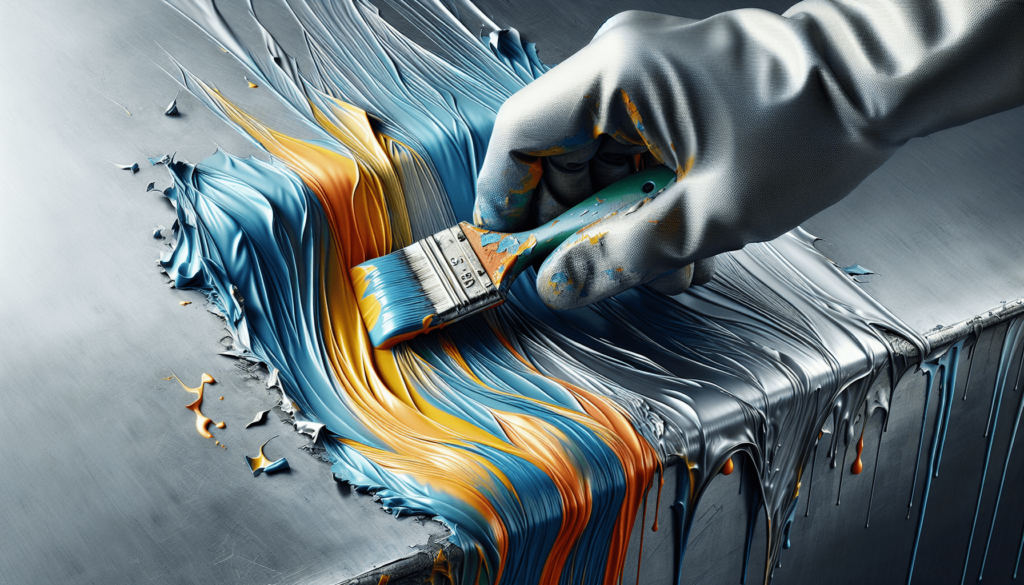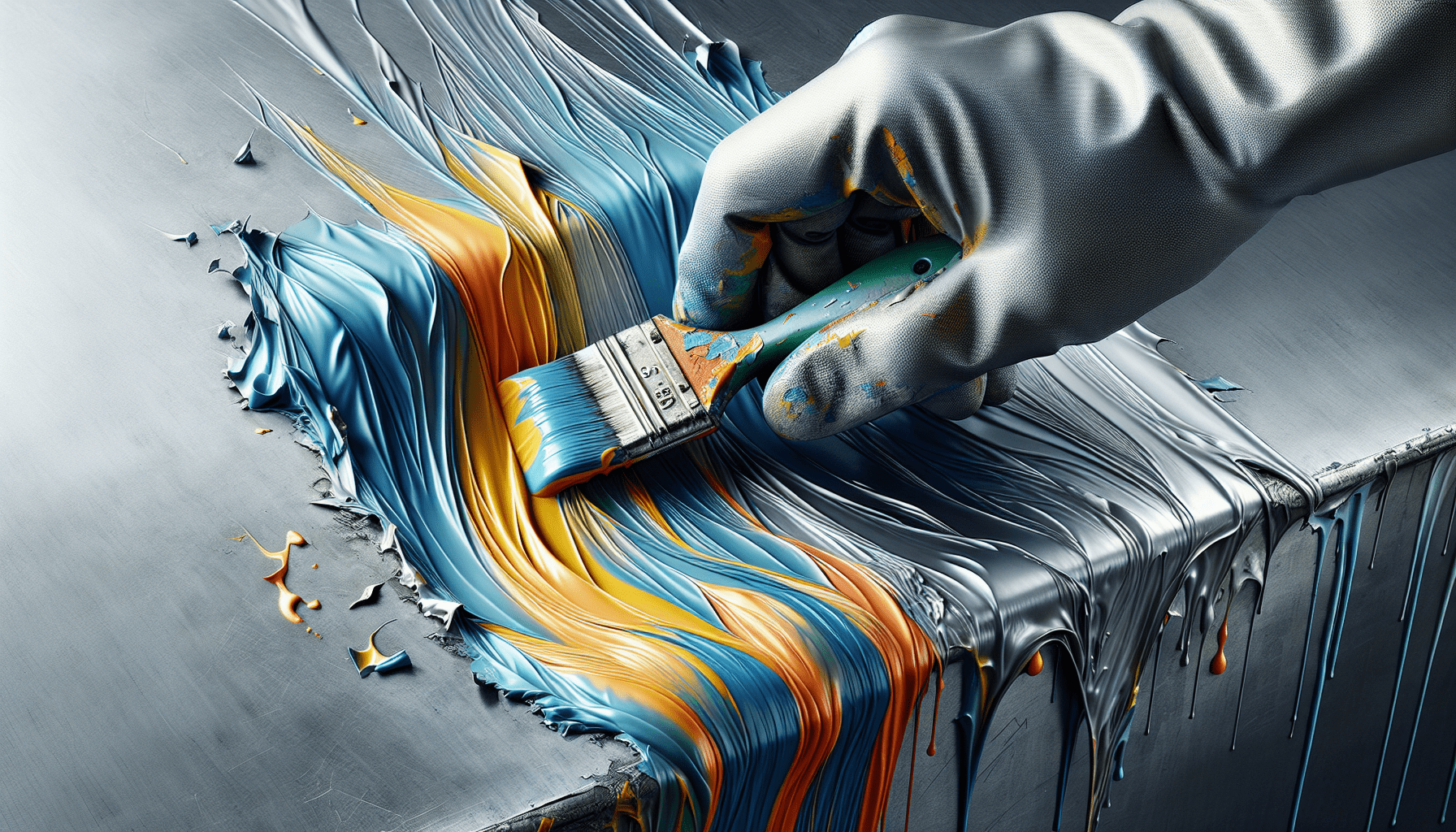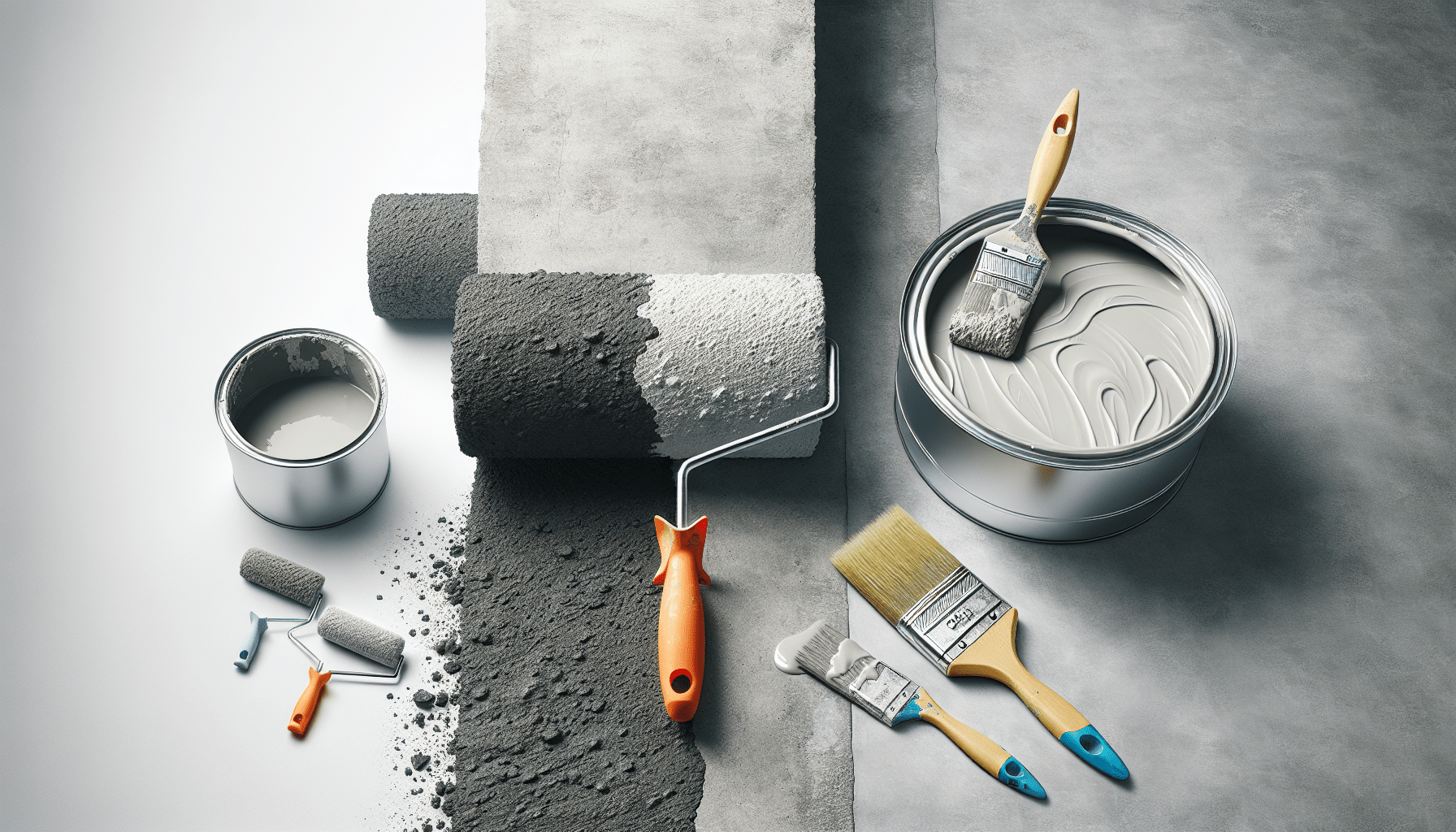In this article, you will learn how to effectively remove latex paint from metal surfaces. Whether you are dealing with an accidental spill or wanting to restore the original look of your metal objects, this step-by-step guide will provide you with the necessary techniques and tools to strip the paint effectively. By following these instructions, you can achieve a smooth and clean surface, allowing you to repaint or restore your metal items with ease.
Preparation
Before you begin the process of stripping latex paint from metal, it is important to gather all the necessary materials. You will need a putty knife or scraper, a wire brush, a chemical paint stripper, protective gear such as gloves and goggles, a well-ventilated work area, a damp cloth or sponge, a solvent or mineral spirits, fine-grit sandpaper, a metal primer (if necessary), and the desired paint or protective finish for the metal.
Once you have gathered all the materials, it is essential to prepare the work area properly. Clear the area of any obstacles or items that may get in the way. Lay down a drop cloth or old newspaper to protect the surrounding surfaces from any paint or stripper drips.
Removing Loose Paint
To effectively strip latex paint from metal, you will first need to remove any loose or peeling paint. One way to do this is by using a putty knife or scraper. Hold the tool at a slight angle and carefully scrape off the loose paint. Be cautious not to apply too much pressure, as this may damage the metal surface.
After removing the loose paint, it is recommended to scrub the metal with a wire brush. This will help remove any remaining paint particles and ensure a smoother surface for the stripping process.
In some cases, where the paint is stubborn or there are multiple layers, a chemical paint stripper may be necessary. Follow the manufacturer’s instructions carefully when using a chemical paint stripper. Apply the stripper evenly on the painted surface and allow it to penetrate the paint for the recommended amount of time.

Safety Precautions
When working with chemical paint strippers or any painting-related tasks, it is crucial to prioritize safety. Always wear protective gear, including gloves and goggles, to protect your skin and eyes from potential harm. Additionally, it is essential to work in a well-ventilated area to avoid inhaling any fumes or harmful chemicals.
Ensure that the work area is well-ventilated by opening windows or using fans to circulate the air. If working indoors, consider using a respirator to further protect yourself from any harmful fumes.
Applying Chemical Paint Stripper
Before applying a chemical paint stripper, carefully read and understand the instructions provided by the manufacturer. Different products may have varying instructions, so it is important to follow them precisely.
After reading the instructions, apply the paint stripper evenly on the surface of the metal. Use a brush or a cloth to ensure even distribution. It is crucial to cover the entire painted area with the stripper and avoid leaving any spots untouched.
Allow the chemical paint stripper to penetrate the paint. This usually takes a specific amount of time, as indicated in the instructions. During this waiting period, avoid touching or disturbing the painted surface.

Scraping Off the Paint
Once the chemical paint stripper has adequately penetrated the paint, it is time to scrape off the paint using a putty knife or scraper. Start in one corner or edge of the painted area and work your way across in small sections.
Hold the putty knife or scraper at a slight angle to the metal surface and apply gentle pressure. Carefully scrape off the softened paint, removing it layer by layer. Be cautious not to scratch or damage the metal underneath the paint.
Continue working in small sections until all the paint has been scraped off. If there are any stubborn or remaining paint spots, you may need to go over them again with the chemical paint stripper or use additional scraping techniques.
Cleaning the Metal
After successfully removing the paint, it is time to clean the metal surface. Start by wiping down the surface with a damp cloth or sponge to remove any residue or remaining paint particles. This will help create a clean surface for the next steps.
If there are still stubborn paint spots or residue, you can use a solvent or mineral spirits to remove them. Apply the solvent onto a clean cloth and gently rub the affected areas. This process will help break down and remove any lingering paint or residue.
Once the cleaning process is complete, it is important to rinse the metal with clean water. This will ensure that all the paint stripper, solvent, and residue are completely removed. Allow the metal to dry thoroughly before proceeding to the next step.
Sanding the Surface
To achieve a smooth and even surface, sanding is essential after removing the paint. Start by using fine-grit sandpaper and sand the metal surface in a circular motion. This will help remove any remaining paint particles or roughness.
Be attentive while sanding and regularly check the progress. Keep in mind that the goal is to create a clean and prepared surface, but avoid over-sanding as it may damage the metal underneath.
After sanding, it is extremely important to remove any sanding residue. Use a clean cloth or brush to wipe away the dust and debris created during the sanding process. This step is crucial to ensure a clean and smooth surface for the finishing touches.
Finishing Touches
To complete the process of stripping latex paint from metal, there are a few finishing touches to consider. Start by checking for any remaining paint spots that may have been missed during the earlier steps. If you notice any spots, repeat the necessary steps to remove them.
Depending on the condition of the metal and your desired outcome, it may be necessary to apply a metal primer. A metal primer will help ensure better adhesion of the paint or protective finish and provide an additional layer of protection for the metal.
Once the primer has dried according to the manufacturer’s instructions, it is time to apply a new layer of paint or protective finish. Choose a paint or finish suitable for metal surfaces and apply it evenly and smoothly. Follow the instructions provided by the product to achieve the best results.
Allow the paint or protective finish to dry completely before handling or exposing the metal to any potential damage. This will ensure a durable and long-lasting finish.
Clean-Up
After completing the stripping and painting process, it is important to properly dispose of any used paint stripper and paint chips. Check with your local waste management regulations for the proper disposal methods.
In addition to disposing of waste properly, it is crucial to clean your tools and equipment thoroughly. Clean any brushes, scrapers, or other tools used during the process to prevent any residual paint or stripper from causing damage during future use. Follow the manufacturer’s instructions for cleaning and storage.
Maintenance
To ensure the longevity of the painted metal surface, regular maintenance is essential. Regularly inspect the paint to identify any signs of wear, peeling, or damage. Touch up any small areas that may need attention to maintain the overall appearance and protection of the metal.
Keep the metal clean and dry by regularly cleaning it with a mild soap and water solution. Avoid using harsh chemicals or abrasive materials that may damage the paint or protective finish.
In conclusion, stripping latex paint from metal requires proper preparation, the right materials, and a systematic approach. By following the outlined steps, you can successfully remove the paint, clean the metal surface, and apply a new layer of paint or protective finish. Remember to prioritize safety, follow manufacturer’s instructions, and maintain the metal for long-lasting results.



